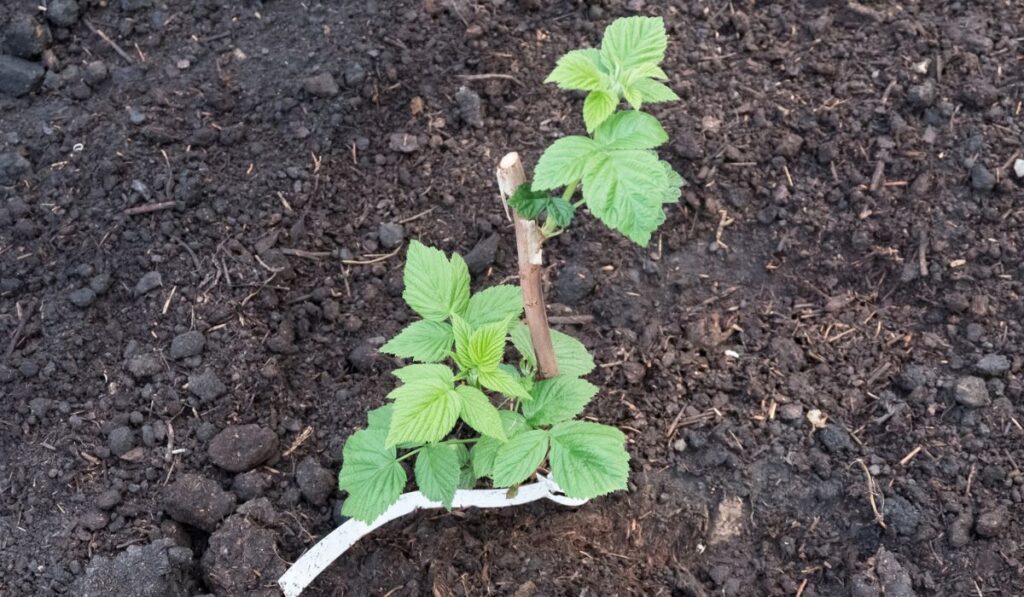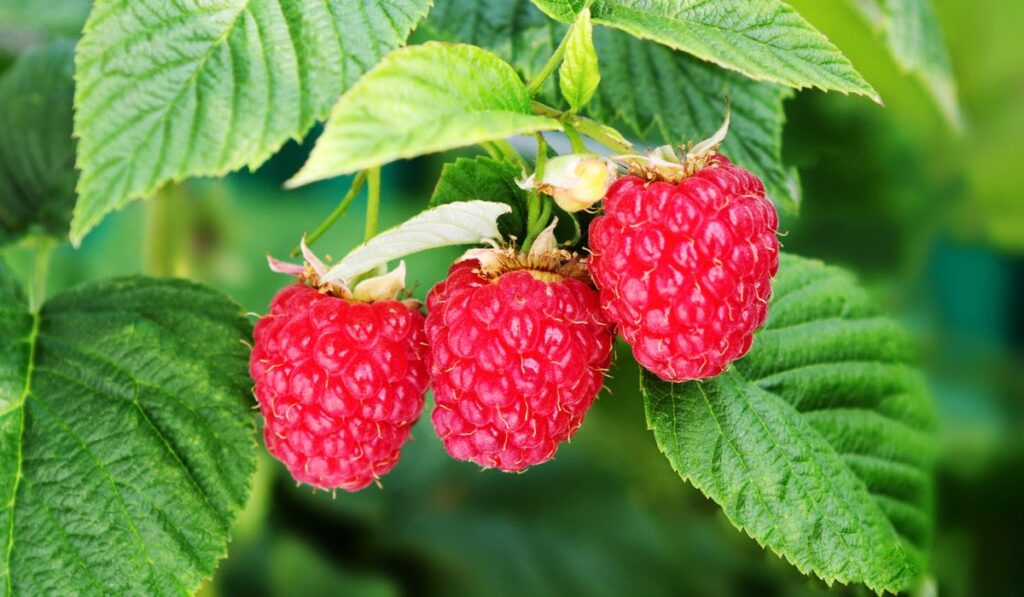There’s nothing more rewarding than growing your own fruits and vegetables, and it’s an even better feeling when you manage to do it well. Raspberries are a sweet treat that everyone loves, and many have turned to growing their own. However, if you want to grow the juiciest raspberries possible, you’ll need to keep a few pointers in mind.
It’s best to plant raspberries in the late spring and ensure they’re in well-drained soil and around 4 feet apart. Water them throughout the summer, but stop watering them as the months get colder. Make sure you prune the plants every year and keep animal predators at bay for the best results.
Let’s take a closer look at what it takes to grow the best raspberries. We’ll dig into the details of what level of sun is optimal, when you should prune the plants, and more.
What Time of Year Should Raspberries Be Planted?

The best time of year to plant raspberries is in spring. The ideal months are April and May, though you may be able to get away with a month earlier or later. For the juiciest raspberries, stick with these prime months!
You should make sure to harvest the raspberries by late summer. Around mid-July through the end of August is usually best, though this will differ slightly based on the weather at your location.
Full Sun vs. Partial Sun: Which Is Better?
It is possible for raspberries to grow in a spot that only has partial sun. However, if you want to get the most fruit out of your efforts, then you should plant them in a spot that has at least six to eight hours of sun. As long as the soil has been prepared properly, the more sun, the better, for this fruit.
How to Plant Raspberries
To get the juiciest raspberries, you need to make sure you make good decisions at every stage of the process.
Here’s a breakdown of best practices when planting raspberries:
Pick Your Spot Well
As well as picking the time of year well, you need to pick the spot that you plant them. They should be planted in well-drained soil in the sunniest possible spot if your yard. It’s not detrimental if you have to plant them in a spot that gets some shade, but you may not get as many raspberries as you’d expect.
Prepare the Soil
The best thing to do to ensure ideal soil conditions is to create a blend of the soil you dig up from the ground and compost-rich soil. The hole should be about as deep as the roots of the plant and doesn’t need to go far down.
Planting the Raspberries
Your raspberry plants should be around 4 feet apart. Fill the soil back in and ensure they have adequate space to grow. Apply a couple of inches of mulch around them to keep the soil moist, and then you can leave them alone and watch them grow!
Further Maintenance
As the months get hotter, you’ll have to water the raspberry plants. Whenever the top of the soil is dry, sprinkle some on there so they can moisten up.
This should only be during the warm months. As fall rolls back around, do not keep watering them or you may end up rotting the roots.
Pruning Tips for Raspberries
You should prune raspberry plants in the spring, as that’s when new growth will come out, and you don’t want the plants to get tangled. Cut the canes back to around 5 feet and that should be sufficient, ensuring the bushes aren’t touching each other.
If there are weak canes that look rotted (which you can tell from a black color or complete lack of sturdiness), then you should prune these entirely.
How Do I Know When Raspberries Are Ready?

Raspberries are ripe for the picking when they’ve gained their full color and it’s consistent all over the fruit. They’ll also have a very full appearance. Red is the most common color of raspberry, though they also come in black and purple.
Will Raspberries Grow Back Every Year?
Raspberries will grow back every year only if you take proper care of the plants. It’s important to keep pruning them at the start of spring, allowing new fruit to grow. If you forget to water them when necessary or even water them when they should be left alone, then the plant may die and you’ll have to start all over again.
How Do You Keep Animals Away From Raspberry Plants?
One common issue people often have with raspberry plants is that critters can’t quite resist them. There are a couple of steps you can take to avoid this.
The first is to cover them with netting (on Amazon) if birds are the ones attracted to the berries. This will prevent curious, hungry beaks from picking them up. Rabbits also love raspberries, but a chicken-wire fence will help this.
To discourage any animal, you can also regularly pluck raspberries as soon as they’re ripe and remove any fallen ones from the ground.
You do not, however, want to keep bees away from raspberries. The bees will pollinate them and you’ll then get more fruit out of your plants.
Overall, raspberries are fairly easy plants to grow as long as you take care in the beginning. They don’t require much maintenance as long as they have sun and some moisture, and they’ll grow back year after year — leaving you with some juicy berries that you can keep plucking right from the bush.
